Episode 129 Show Notes
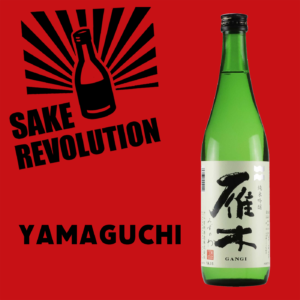 Episode 129. This week we focus our spotlight on sake and stories from another prefecture: Yamaguchi! Well known in Japan as the home to the poisonous but delicious Fugu (Japanese blowfish aka pufferfish), there are a number of outstanding breweries in the Prefecture. Located on the far western tip of Japan’s main Honshu island, Yamaguchi is not close to Tokyo, but does have easy access to Hiroshima. To dip our toe into the wide world of Yamaguchi sake, we taste the stunning Gangi Mizunowa Junmai Ginjo. This expressive and fruity brew elegantly layers pineapple, mango and a whisper of floral notes to create a silky smooth and enjoyable aroma and flavor. But does it pair with Fugu? Listen in and discover a bit of what Yamaguchi sake has to offer. #sakerevolution
Episode 129. This week we focus our spotlight on sake and stories from another prefecture: Yamaguchi! Well known in Japan as the home to the poisonous but delicious Fugu (Japanese blowfish aka pufferfish), there are a number of outstanding breweries in the Prefecture. Located on the far western tip of Japan’s main Honshu island, Yamaguchi is not close to Tokyo, but does have easy access to Hiroshima. To dip our toe into the wide world of Yamaguchi sake, we taste the stunning Gangi Mizunowa Junmai Ginjo. This expressive and fruity brew elegantly layers pineapple, mango and a whisper of floral notes to create a silky smooth and enjoyable aroma and flavor. But does it pair with Fugu? Listen in and discover a bit of what Yamaguchi sake has to offer. #sakerevolution
Skip to: 00:19 Hosts Welcome and Introduction
Welcome to the show from John and Timothy
Skip to: 01:29 Sake Spotlight: Yamaguchi
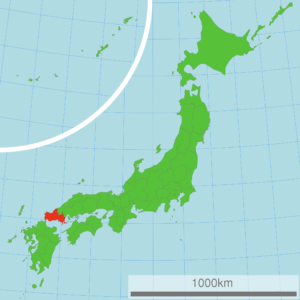
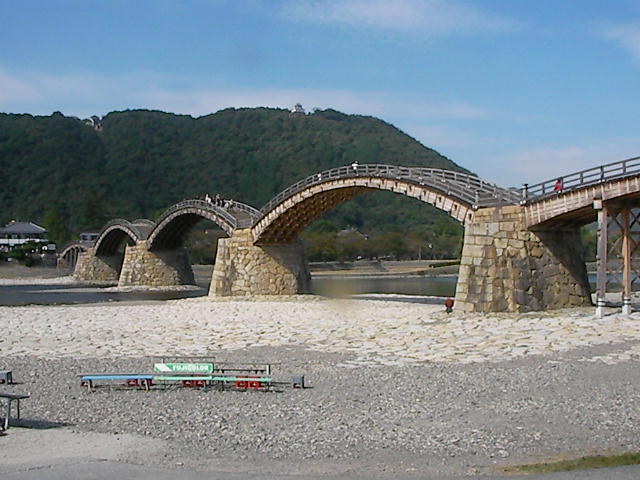
Fugu – Japanese Blowfish:
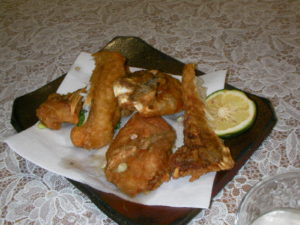
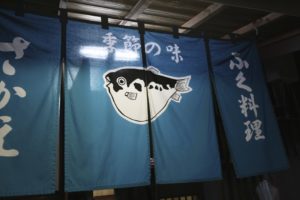
Book recommendation: Discovering Yamaguchi Sake
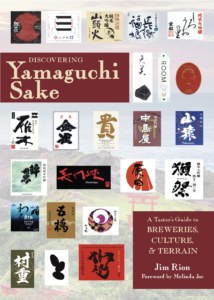
Jim Rion’s Book mentioned in the episode is now available for pre-order!
- https://www.amazon.com/Discovering-Yamaguchi-Sake-Tasters-Breweries/dp/161172080X
- https://www.stonebridge.com/catalog-2020/Discovering-Yamaguchi-Sake
- https://narrowgaugebooks.indielite.org/book/9781611720808
- https://www.barnesandnoble.com/w/discovering-yamaguchi-sake-jim-rion/1141100896
- https://www.booksamillion.com/p/Discovering-Yamaguchi-Sake/Jim-Rion/9781611720808
 Recommended: Sake Deep Dive Podcast
Recommended: Sake Deep Dive Podcast
Hosts: Jim Rion, Andrew Russell
Website: https://www.sakedeepdive.com/
Instagram: https://www.instagram.com/sakedeepdive/
Twitter: https://twitter.com/SakeDeepDive
Facebook: https://www.facebook.com/SakeDeepDive/
Skip to: 17:10 Sake Introduction and Tasting: Gangi Mizunowa Junmai Ginjo
Gangi Mizunowa Junmai Ginjo
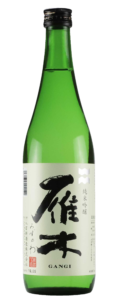
Alcohol: 15.5%
Brewery: Yaoshin Shuzo
Classification: Junmai Ginjo
Prefecture: Yamaguchi
Rice Type: Yamadanishiki
Seimaibuai: 50%
SMV: +4.0
Brand: Gangi (雁木)
Importer/Distributor: Mutual Trading (USA)
NOTE: Use Discount Code “REVOLUTION” for 10% off your first order with Tippsy Sake.
Skip to: 33:16 Show Closing
This is it! Join us next time for another episode of Sake Revolution!
Support us on Patreon
 Now there is a new way to support Sake Revolution. Join us on Patreon! Patreon is an online platform that allows you to support your favorite creators by subscribing to a monthly membership. At Sake Revolution, we’re offering two tiers, each with its own perk. If you enjoy our sake podcast, if you are able, please consider supporting this labor of sake love! See below to learn about our Patreon support levels.
Now there is a new way to support Sake Revolution. Join us on Patreon! Patreon is an online platform that allows you to support your favorite creators by subscribing to a monthly membership. At Sake Revolution, we’re offering two tiers, each with its own perk. If you enjoy our sake podcast, if you are able, please consider supporting this labor of sake love! See below to learn about our Patreon support levels.
-
Sake Enthusiast
Have you ever wanted to sip along with us as we taste our sakes on the podcast? Now you can! As a Sake Enthusiast patron, you’ll get the inside track and know in advance which sakes we’ll be featuring on the show. This allows you to get them on hand and sip along with us while you listen.
-
Sake Otaku
As a Sake Otaku supporter of the pod, you’ll get access to all the Sake Enthusiast intel along with access to a monthly live zoom Sake Happy Hour taking place the first Weds of every month at 9pm ET (6pm PT). Visit with us live on zoom! Come with all your questions and suggestions and enjoy a relaxed and fun Happy Hour with with us as we all sip sake together!
Episode 129 Transcript
John Puma: 0:22
Hello everybody and welcome to Sake Revolution. This is America’s First Sake podcast, and I’m your host, John Puma. From the Sake Notes, also the administrator over at the internet sake discord, as well as red, its r slash sake community.
Timothy Sullivan: 0:39
And I’m your host, Timothy Sullivan. I’m a Sake Samurai. I’m a sake educator, as well as the founder of the Urban Sake website. And every week John and I will be here tasting and chatting about all things sake. And doing our best to make it fun and easy to understand.
John Puma: 0:56
Oh, Tim, how have you been?
Timothy Sullivan: 0:58
I’m doing good. How about you?
John Puma: 1:00
Not bad, not bad. Not bad. I am, uh, know, I’m, I’m, I’m. Kind of getting things a little organized in my life. Getting, getting things set up. Uh, you know, the season’s changing. Do you notice that? Like, we kind of skipped the fall.
Timothy Sullivan: 1:15
I had a good amount of fall. There were a
John Puma: 1:17
had like a week and a half. It got real cold, real fast.
Timothy Sullivan: 1:20
some sweater weather in there.
John Puma: 1:22
Well, sweater weather continues, or winter, I think, right? But it’s a sweater with a coat over it.
Timothy Sullivan: 1:29
Yeah. So what are we gonna be talking about on the podcast today?
John Puma: 1:32
Well today, uh, we are going to take a dip into,
Timothy Sullivan: 1:37
Dip our toe
John Puma: 1:39
we’re gonna dip our toe into one of our, uh, sake prefectures. One of, one of my favorite sake prefectures. I think they’re definitely, uh, they’re definitely on the short list for me.
Timothy Sullivan: 1:50
Does it begin with a “Y”?
John Puma: 1:52
does. Oh, no, no, no. Guys, we’re not doing Yamagata. Not today.
Timothy Sullivan: 2:01
wa
John Puma: 2:01
No. We’re talking about the other, the other y uh, Yamanash… No. Wait a minute. Uh, No. The other Y Yamaguchi.
Timothy Sullivan: 2:11
Yamaguchi.
John Puma: 2:13
Yamaguchi. I think Yamaguchi a little bit of a, a little bit of a dark horse. You got a lot of great stuff that comes from there. And not a lot of people think Yamaguchi when they probably should be.
Timothy Sullivan: 2:24
Yes. More people need to think Yamaguchi when they think sake.
John Puma: 2:28
Yeah.
Timothy Sullivan: 2:29
now John, do you know where, if we’re looking at Japan, do you know where Yamaguchi is located?
John Puma: 2:35
Yes. Yeah. So Yamaguchi is, uh, just west of uh, Hiroshima.
Timothy Sullivan: 2:40
Right. So if you look at the. Honshu Island, which is the main island of Japan, and it’s kind of curved like a croissant shape. The far left corner, far to the west, basically the western tip of Honshu Island is where Yamaguchi’s located. It’s not too far from Hiroshima, right?
John Puma: 3:04
right, right, right. Yeah if you’re taking like a like from Fukuoka or uh, to Fukuoka, you’re gonna, it’s gonna be like Hiroshima, Yamaguchi, and then Fukuoka,
Timothy Sullivan: 3:13
it’s on, it’s on the far west of Honcho Island and it’s a really beautiful region of Japan. Have you been to Yamaguchi before?
John Puma: 3:24
I, I’ve taken a train through it twice.
Timothy Sullivan: 3:28
Okay,
John Puma: 3:28
that’s about it. I, I’d actually never, uh, stopped and spent any time there, and I really should. It’s It’s on my list of, uh, of sake, sins that I need to atone for.
Timothy Sullivan: 3:38
Well, I’ve spent a little bit of time there in 2011. I spent about, a little over a month in Yamaguchi. It was in the winter time, so it was colder than I thought, and I didn’t know how much snow was gonna get, but it did actually snow while I was there. Very different levels of snow from my time spent in Niigata, which is in the Japanese Alps, and was very, very mountainous. But where I lived in Yamaguchi was, uh, it got very cold, but it didn’t snow. Snow as much Yamaguchi is famous for a few things, and one of them is some of their culinary items are very, very famous. And do you know what the most famous seafood is from Yamaguchi?.
John Puma: 4:28
Uh, I, I couldn’t tell you honestly, like for me, like Yamaguchi, the on literally, the only thing I know about Yamaguchi is the sake. So enlighten me. I wanna know
Timothy Sullivan: 4:36
Okay. Have you ever heard of
John Puma: 4:40
sounds familiar. That is, um, correct me if I’m wrong and I’m sure somebody will email us to do so. If I am, that’s the blowfish, right? Ah, haha.
Timothy Sullivan: 4:52
the quote unquote poisonous blowfish.
John Puma: 4:56
wait, wait. Quote unquote.
Timothy Sullivan: 4:58
Yeah, the, I think that the blowfish, and again, our, our listeners can write in who know better, but I think. The blowfish that are wild. Like if you catch a Fugu, a blowfish from the ocean, you reel it in and then you cut it up and you eat it. Like one does that wild caught. Blowfish is poisonous because of something they eat and farmed. So if you have fugu in a farm and you control exactly what they eat, aquaculture. Think they’re not poisonous or not as poisonous or something like that. So
John Puma: 5:38
huh?
Timothy Sullivan: 5:39
it, I think that most people who die from eating blowfish in Japan have caught a blowfish from the ocean themselves. Like they go out on a little boat and they catch it. I, I think it’s really famous in Japan that if you prepare blowfish for your restaurant, you need a license. Have you heard of that?
John Puma: 5:58
Uh, yeah, and, and it made a lot of sense to me that if, if you’re preparing an item that’s potentially fatal, uh, then you should probably have some sort of, backing, that’s some sort of certification that says that you’re probably not gonna kill people
Timothy Sullivan: 6:11
Yeah. I think the liver and the skin is poisonous.
John Puma: 6:16
Hmm. But, but depending on what they eat, it can be less poisonous. Is that, the gist?
Timothy Sullivan: 6:21
That’s what I, in my broken Japanese, that’s what I understood that we didn’t need to worry because this was farmed aquaculture fugu, but I still had the local hospital on speed dial just in case
John Puma: 6:35
Hmm. You know, not, not a bad idea. Uh, you can never be too careful.
Timothy Sullivan: 6:41
Yeah, I think from like if you’re a Japanese person and you live in Tokyo or you grew up outside of Yamaguchi, I think the thought of having a fugu dinner is very, sounds very expensive and very extreme and kind of, uh, a real occasion. You know, you want a real occasion to do that. It’s a very special kind of meal. But when I lived in Yamaguchi, we had the fugu dinner in. Really old school countryside place where they actually farmed the fugu. So it was attached to an aquaculture farm and they had them living in these pens and then you could go out and see them and then you’d go up this flight of stairs and these two older ladies served you fugu in in seven different ways. So they used every part of the fugu
John Puma: 7:35
I was about to ask what does that mean exactly? What’s seven different ways of, of, of, of having it?
Timothy Sullivan: 7:42
Well, the first thing they serve you is like the most famous, which is the fugu sashimi. So they slice it super thin and it’s like a, it almost has the texture of like raw chicken. I don’t know if you’ve ever eaten raw chicken in Japan, but it’s like very meaty and they slice it very thin, and it has a very, very firm texture. If you can imagine like the texture of what raw chicken taste like. That’s the texture of it. So it’s very firm, very muscular, and, sliced, paper thin. And then they did kara-age where they deep fried the meat
John Puma: 8:17
Oh.
Timothy Sullivan: 8:18
and then they did, uh, nabe or a hot pot where they put pieces of the fugu in and they mixed it up with vegetables. And then after you ate it out of the Nabe pot, they took some of those pieces out and then they put it with rice. And then you had a Don Nabe with rice. And then at the end they wrapped those with, uh, I forget what it was, but it was something with scallions and we wrapped it, maybe it was like tofu skin, and we wrapped it and it was like all these different preparations of fugu, one after the other. And, uh, it was delicious, really good, but it had this mystique to it. It’s like, oh
John Puma: 8:56
All right.
Timothy Sullivan: 8:57
but I survived.
John Puma: 8:58
Clearly
Timothy Sullivan: 9:00
Yes. Would you, would you, if someone offered you a poisonous fugu dinner, would you, would you do it
John Puma: 9:07
you know, I think that, wait a minute. Wait. You’re, you’re specifying poison fugu. Hang on. Um, I don’t know. I actually, it’s never come up
Timothy Sullivan: 9:17
If someone offered you a potentially poisonous dinner, I mean it, it’s not poisonous. They’re not gonna serve you the poisonous parts, but there’s that risk, there’s that unknown.
John Puma: 9:27
Mm. Um, I probably would because I think, again, I think that if somebody made their livelihood, that they, that they sold, you know, and prepared this. Dish, they’re probably very good at it, and I imagine that they’ve probably never killed anybody. I imagine that’s a, that’s a big red flag when you’re trying to get your license.
Timothy Sullivan: 9:51
Yes.
John Puma: 9:52
Well, you, we, there was that one incident. You,
Timothy Sullivan: 9:56
The two little old ladies who were running the Fugu restaurant did remind me a little bit of arsenic and old lace. I don’t know if you’ve ever seen that movie,
John Puma: 10:04
Uh, it’s been a while.
Timothy Sullivan: 10:06
Yeah. It’s about the, the two, uh, spinster aunts that, that kill people and put them in the window seat. But, uh, these, lovely older ladies at the, at the fugu restaurant were very sweet and nobody wound up in the window seat. So, uh, it was, it was a great experience all around, but it was very different the, the fugu restaurant in rural Yamaguchi at the aquaculture farm was very different from the experience you would have if you paid top dollar in Tokyo or
John Puma: 10:41
Mm-hmm. Mm-hmm.
Timothy Sullivan: 10:42
So it was great to have the more authentic experience right where the fish was being kept and really enjoyed it.
John Puma: 10:49
Nice. You know, it, it’s, it’s pretty great that we’re getting to have this, chat with you here, having spent time there. You know, usually when we do this, it’s like, oh, like, you know, we’ve been, we visited you, having had a nice chunk of experience there, uh, makes this a little more interesting. I think
Timothy Sullivan: 11:06
Yeah, it was also in Yamaguchi that I saw my first real live monkey in Japan.
John Puma: 11:14
was, was he hanging out at, at the, at the Fugu
Timothy Sullivan: 11:17
no, he wasn’t
John Puma: 11:18
What’s his story?
Timothy Sullivan: 11:19
I think the monkeys are smart enough to like avoid the fugu, but, I was, riding. In a car and we were driving down a mountain pass road in Yamaguchi, and this like giant snow monkey like ran across the street in front of the car. I mean, for far away. we weren’t gonna hit the monkey, but it was like the first time I’d ever seen a wild monkey in Japan. And it freaked me out a little bit. I was like, oh my God, what is that? He’s like, oh, it’s just a monkey. They’re everywhere. And I’m like, what? Monkeys are everywhere? So it. It was kind of crazy, um, to see my first wild monkey. I, I saw more monkeys when I lived in Niigata, but, uh, you’ll never forget your first monkey, John
John Puma: 12:00
uh, I, I have yet to encounter monkeys in the wild so far. Who knows? Maybe, you know, who knows? One day I’ll get lucky enough and I’ll run across some, some wild monkeys.
Timothy Sullivan: 12:14
I think the further, the further out into the countryside you go in Japan, the more likely your monkey sighting are gonna go up. I
John Puma: 12:21
I’m not much of a countryside person regardless of what country I’m in. So that’s a very rare thing for me. I’m a I’m, I am a city folk.
Timothy Sullivan: 12:32
Yeah. Well, There’s a lot of wonderful breweries in Yamaguchi, and I think the total, do you wanna take a guess? We always do this every time we do a Prefecture. Do you wanna take a guess the number of breweries in Yamaguchi, roughly.
John Puma: 12:44
Hmm. So when I think Yamaguchi, I think less about quantity and more about quality So I wanna say something like 30.
Timothy Sullivan: 12:55
Oh, there’s actually 23
John Puma: 12:57
Oh, you know, originally I was gonna say 20 and I, I was like, ah, shoot, for the, shoot for the moon
Timothy Sullivan: 13:03
Yeah.
John Puma: 13:05
I should have stopped earlier. That’s pretty good though. Not, not too bad. 23,
Timothy Sullivan: 13:09
Yeah. Yeah.
John Puma: 13:11
my instinct was right.
Timothy Sullivan: 13:12
Yes. So for comparison, the Prefecture with the largest number of breweries is Niigata around 89 or 90. And Kagoshima. A Prefecture we covered recently only. Two places producing sake.
John Puma: 13:29
Hmm.
Timothy Sullivan: 13:29
and, Okinawa only has one. So I think that with 23, you’re somewhere in the middle, don’t you think? Yeah. a little smaller than most, but, uh, that’s a good number of breweries.
John Puma: 13:44
Yeah, I think so. That’s not bad. Um, but yeah, 23 and, and you know, some really great stuff that comes outta there. You mentioned that earlier. Is that Yamaguchi, is a place that you can get fantastic sake? Tim, I think that when it comes to, regionality and sake and the, and the idea that there is a, a local style, that sometimes it’s something that breweries will get together and do, on purpose. Sometimes, it’s, sometimes it’s a little more like, well, this is what the water is like and it has an influence, et cetera, et cetera. do you think there’s a, a regional style for Yamaguchi, or are they just, you know, are they just making really good sake?
Timothy Sullivan: 14:27
That’s a really good question. I think every Prefecture wants to have some type of cohesiveness to their, their area’s sake.
John Puma: 14:36
Mm-hmm.
Timothy Sullivan: 14:37
Maybe if you asked. Brewers in Yamaguchi. They may all say, oh, pairs well with fugu. pairs well with poisonous blowfish
John Puma: 14:46
Uh, but what doesn’t?
Timothy Sullivan: 14:48
Yeah. You know, I wish I knew more about Yamaguchi sake in general, even though I stayed there for a little bit. And I’ve enjoyed Yamaguchi sake for years. There is one of our friends who’s a true expert, our buddy Jim Rion,
John Puma: 15:06
Mm-hmm.
Timothy Sullivan: 15:07
and the news flash is that Jim is actually living in Yamaguchi, a huge devote of Yamaguchi sake, and he’s publishing a book that’s coming out in February, 2023.
John Puma: 15:21
Yeah.
Timothy Sullivan: 15:23
Yeah, that book is gonna be, Discovering Yamaguchi sake, a taster’s guide to breweries culture and terrain.
John Puma: 15:32
Yeah, and I, think. he’s the guy when it comes to Yamahai sake. He loves Yamaguchi sake. He’s got a lot to say about it. He knows a tremendous amount. and he’s, just a great resource for that sort of thing. We can literally say he wrote the book on Yamaguchi sake.
Timothy Sullivan: 15:52
I propose that we invite Jim onto the show and do a Yamaguchi Prefecture part two when the book comes out next year. So we’ll definitely invite Jim on the show and if you’re interested in listening to Jim’s thoughts on Sake, he also has his, uh, Own podcast too. So Jim is one of the co-hosts on the Sake Deep Dive podcast for the Beyond Beginners. So if you wanna get, if you wanna get deep into the weeds and the technicalities of sake. The podcast that Jim does, it’s not dedicated only to Yamaguchi sake, but they are really great to listen to Andy and Jim, and I think that when this book comes out, that’ll give us a perfect reason to revisit Yamaguchi for another Sake Revolution episode.
John Puma: 16:46
It sounds like a plan to me. and by virtue of of that podcast though, we still wanna still want to get him on the show at some point for that as well. We got a lot of reasons to have Jim on the show
Timothy Sullivan: 16:55
Yes, and if you’re interested in Jim’s book Discovering Yamaguchi Sake, it is available for pre-order all over the internet. So we will have a link to that. If you wanna pre-order in our show notes at SakeRevolution.com.
John Puma: 17:10
Fantastic. Fantastic. now, as is customary, we’re not just gonna sit here and prattle on about, about, uh, sake without having something to taste. Uh, so we do have some Yamaguchi sake that we are going to sip and talk about
Timothy Sullivan: 17:27
Boy, do we ever, we picked a doozy. Such, such a favorite brewery of mine. So John, do you wanna let our listeners know which Yamaguchi sake will be tasting for today’s episode?
John Puma: 17:42
Yes, absolutely. So today we are going to be tasting the, Gangi “mizu no wa” Junmai ginjo now. The brewery here that produces Gangi is Yaoshin Shuzo, and they’ve only been around since 1922, so they’re spring chicken in the sake world. Um, uh, this sake, uh, uses Yamdanishiki rice for both components, is milled down to 50% of it. Original size. The yeast is Yamaguchi 9H sake meter value, that measurement of uh, dry to sweet is plus three. Uh, the acidity is 1.6 and the alcohol by volume is 15%.
Timothy Sullivan: 18:30
Yes, so Gangi is a small but really well regarded brewery located in Iwakuni, Japan and. I had the good fortune to visit Gangi
John Puma: 18:45
Mm-hmm.
Timothy Sullivan: 18:46
and Iwakuni is really famous as a town because it has this famous bridge. Do you know the.
John Puma: 18:53
Yes, yes. The, bridge with like five, I wanna say arcs, but those are actually kind of like stairs when you’re actually on the bridge. I, I imagine that the show notes will, of course, have photos of this bridge.
Timothy Sullivan: 19:07
Yeah, the bridge is called the Kinai Bridge, K I N T A I. Kinai and. Made out of five steep arches and to go up and over the bridge, you have to go basically upstairs and then downstairs, upstairs and downstairs. So these big arches that make up this bridge, it’s very beautiful, very picturesque over the river. And when I visited the Kintai Bridge, They told me that the bridge was built this way with these huge arches to stop people from crossing the bridge quickly. So it’s a defensive bridge. So if you have horses, you have to like walk the horses up the stairs, down the stairs, and you can’t rush across this bridge. You have to go very slowly.
John Puma: 19:54
Yeah. Whenever I see photos of it, I’m, I often wonder like, what the hell they were thinking and
Timothy Sullivan: 20:00
How much
John Puma: 20:00
answers that
Timothy Sullivan: 20:01
drink? How much sake did they drink before they built this bridge? Yeah. So, uh, you could see a photo of that in our show notes. It’s very beautiful. And Iwakuni is the town where Gangi is located, and Gangi itself has a meaning that’s related to. The town and the river that this bridge goes over. And Gangi is the Japanese word for the steps that go into the river from the shore. So maybe you’ve seen those on some riversides where there’s kind of like a stepped down, um, embankment. On the side of a river. So if you wanted to, you could like kind of step down and go into the water. So that, that’s, that is what the meaning of Gangi is. It’s that, that, uh, stepped embankment on the side of the river.
John Puma: 20:50
Oh, very nice.
Timothy Sullivan: 20:51
And that’s somehow how the, they got their name and, uh, since they were founded in 1922, this is their a hundred year anniversary year.
John Puma: 21:02
Oh yeah, it is, isn’t it?
Timothy Sullivan: 21:04
Yeah. Well, I just did a little quick math in my head there,
John Puma: 21:06
Yeah. Congratulations to, Yaoshin Shuz o. A hundred years.
Timothy Sullivan: 21:12
the brewery, when I visited it was a, a relatively small brewery, uh, beautifully. Maintained had a lovely, you know, some breweries smaller in scale, have this beautiful patina to them, like they have all the old brewery buildings, and it was very much like that. Um, just a lovely place to visit. And the, uh, the staff at Gangi were so welcoming and so kind and beyond that. I’ve become a huge, huge fan of their sake cuz it’s so delicious. Spoiler alert, this is, this is an amazing brew that we picked to represent Yamaguchi. So should we pour it and get it in the glass?
John Puma: 21:58
Let’s, hmm.
Timothy Sullivan: 22:09
All right.
John Puma: 22:12
Oh, Tim, this is one of those where you start pouring it and the aroma is already, is already hitting you.
Timothy Sullivan: 22:18
Mm. It has a lovely aroma. Really, really nice.
John Puma: 22:21
It’s not overwhelming, but it is so pleasant and it’s right away. It is like, hello, how are you? what are you getting on this?
Timothy Sullivan: 22:29
Hmm. Well, it smells quite fruity. I’m actually noticing a little bit of a pineapple aroma
John Puma: 22:36
mm-hmm.
Timothy Sullivan: 22:37
For me, it’s veering towards those barely classic tropical fruits. A little papaya, a little pineapple.
John Puma: 22:43
Yeah, I, I understand what you mean about the pineapple, but I’m trying to like, lean away from it in my mind because when I think, like pineapple has such a high acidity to it, and I’m not getting that thought when I, when I, uh, when I sniff this, but very nice.
Timothy Sullivan: 23:00
So maybe wafting pineapple from the next room. Some, someone is chopping pineapple next door.
John Puma: 23:08
but this is, I think that the, the papaya is like right on, uh, I’m sorry. The spot on.
Timothy Sullivan: 23:14
Yeah.
John Puma: 23:17
Mm. And, and it is, it’s just a really enjoyable aroma that you can just kind of give it a little swirl, give it a. Give it to the swirl, give it to and it’s a, it’s really nice.
Timothy Sullivan: 23:32
Yeah. Honestly, I, I don’t say this very often on the show, but in addition to being fruity in that tropical fruit kind of way, I also smell floral components here. And if you think about lilac or white flower, I get a little bit of that perfumed floral note and it’s, it’s very sublte
John Puma: 23:52
Yes.
Timothy Sullivan: 23:52
but really lovely and I think brings dimension to the overall aroma.
John Puma: 23:57
Hm.
Timothy Sullivan: 23:59
Like, if you listen to us and you don’t like papaya and you don’t like pineapple, you’re like, oh, maybe this sakes is not for me. But it’s, it’s more nuanced than that. It’s, there’s, there’s layers there and it’s really just really good.
John Puma: 24:10
Yeah, this is, uh, you know, we are using, uh, fruity words here, but this is not a fruit bomb by any stretch, I don’t think.
Timothy Sullivan: 24:17
no, it’s very soft, restrained, but clearly fruit driven, fruit and floral.
John Puma: 24:25
Yeah. Very nice. Are you ready for a sip? All right.
Timothy Sullivan: 24:31
Okay. Now we often say, oh, it tastes different than it smelled or different from the aroma. This tastes very similar to the aroma for me, fruity. It feels like somebody dripped a little pineapple juice, in my sake, right? A little bit. Right. in the best possible way.
John Puma: 24:56
Um, yeah, there’s a, The aroma that we described, it feels to me like this distaste is making good on that, right? The aroma is making a promise, and this is keeping it there’s harmony to it and I love it. It’s, it’s really nice the way they, the way they come together and they compliment one another in a great way. It is very tasty. I get a little bit more of. Floral experience now that I’m sipping on it though.
Timothy Sullivan: 25:30
Hmm. Yeah. And there’s also like, Aromas that we perceive after we sip on something. So we also get some of those aromas through the back of our palate up to our, our, uh, retronasal cavity. And so you can perceive additional aromas after you’ve sip the sake as
John Puma: 25:54
Totally.
Timothy Sullivan: 25:55
What do you think about the texture? Of this Gangi Junmai Ginjo.
John Puma: 26:01
It, it’s a little, oh, how do I put this? the texture is, uh, somewhat, you know, somewhat kind of light and a little bit silky, but there is a certain amount of cloying, not in a negative way, of course, but the, the, the taste does hang around and builds as you sip on it more. But when I’m. Kind of moving it around in my mouth. It is, it is. It’s coating a little bit, but it’s also, uh, a little bit light and texture. I feel But yeah, that’s, my thought on that, like flavor wise, I really do think it like builds up and. It keeps going, but it is a bit light in, in texture.
Timothy Sullivan: 26:37
Yeah. I think that for me, the texture is, Medium plus It’s a little bit beyond medium for me. It’s not, I wouldn’t describe it as rich or too coating on the palate, but it’s medium plus. And as far as sweet to dry goes, this is a plus three on the SMV scale, and I find that all this tropical fruit is leading me more to perceive this as a little sweeter than it it might be otherwise, and the finish is not crisp and dry and and falling off a cliff. This lingers on your palate and really gives it even more an impression of richness because of that kind of lingering finish. This is a sake you can sip and then continue to enjoy the aroma. Enjoy the taste. All the while it’s not overwhelming or too in your face or too heavy, they’ve, they’ve just managed to strike this perfect balance, don’t you
John Puma: 27:40
Mm-hmm. Yeah. I think that you nailed it
Timothy Sullivan: 27:43
yeah, and we joke sometimes about the John Puma sitting on the couch relaxing after work sake,
John Puma: 27:50
Yeah.
Timothy Sullivan: 27:51
and I think this should go in the Hall of Fame for that. Don’t you think?
John Puma: 27:55
uh, yes. This, this, I’ve, I’ve had bottles of this at home before and they never last very long. Like it’s They do, they do tend to disappear kind of quick around these parts. It is such a pleasant sipping experience. It is, you know, it’s one of those, um, doesn’t need food in my opinion. Like this is some such a great sipping.
Timothy Sullivan: 28:17
Yes. And you know, it’s interesting, I find that some of those sakes that are so sippable that you just keep drinking without thinking about it. Sometimes they’re a little bit on the light side and this has a little bit more weight to it. It has that a great balance, but, it demands your attention a little bit. But just to be like, look at the glass and be like, oh my God, this is good. Like, this is, if you gave this to your friends who don’t know anything about sake, I think their jaws are gonna hit the floor.
John Puma: 28:51
Tim, that is a fantastic point. This is a phenomenal introduction sake. This is such a great sake to put in front of someone who has minimal or no experience with sake. This is, I think you’re absolutely right, and this is going to blow somebody’s mind if they have this, if this is the first sake they’ve ever had before, they’re gonna just be like, I had no idea that this is what I was getting into. Like, this is, a fantastic introductory sake.
Timothy Sullivan: 29:20
Yeah, so if you have friends out there that are. Sake deprived or have never had sake before. God forbid,
John Puma: 29:28
And, and, and honestly, you’re their friend and you haven’t gone and introduced them to sake yet. What are you doing? You’re a bad friend. You’re gonna go and them to sake. But here we go. We found a good one. This is a, this would be a wonderful entry, uh, entry point, I think, into the world of sake.
Timothy Sullivan: 29:49
And John, I just did something I never do. I just poured myself a little bit more during our tasting on
John Puma: 29:55
never, you never ever do that. You’re always so controlled and reserved about, about how much you consume while we’re recording. And I, you’re absolutely, I I’m like, cause you’re kinda doing it under the folks. I can’t see the entirety of Tim when he is doing this.
Timothy Sullivan: 30:10
Yes, just from the shoulders up,
John Puma: 30:12
his shoulder came up. I was like, what’s he doing over there? And yeah. Is pouring more
Timothy Sullivan: 30:16
I board myself. Another sip of the Gangi “Mizu no wa”. It’s just so good. So good.
John Puma: 30:26
It is, it is. Uh, it, it, it kind of, you know, for me it kind goes into that, that magic water kind of category for me.
Timothy Sullivan: 30:35
Hmm.
John Puma: 30:36
So
Timothy Sullivan: 30:36
You steal, you stealing my trademarked phrases there Puma?.
John Puma: 30:40
Uh, I was, I was crediting you. I. I should have said your magic water. I’m sorry,
Timothy Sullivan: 30:48
You’ll
John Puma: 30:48
but that is, that is a Tim Sullivan special or the, uh, the magic water. Oh, this is so good.
Timothy Sullivan: 30:56
Yeah, this is really good. So, uh, I think that we can highly recommend the Gangi brand to anyone who wants to start exploring the delicious sakes of Yamaguchi.
John Puma: 31:11
Yeah. And, and I think we, we obviously, we mentioned this earlier and this is something that we don’t often do, I don’t think we’ve ever done this on one of our, um, on one of our Prefecture episodes, but we will be back
Timothy Sullivan: 31:27
Yes, we’re gonna have a
John Puma: 31:28
We are gonna return to this, uh, to this topic, to this prefecture, and we’re gonna bring help.
Timothy Sullivan: 31:34
Yes. So we featured a few other authors on the podcast and we really hope that. When Jim’s book comes out next year, that he’ll be kind enough to join us and we’ll feature a, another one of the 23 breweries from Yamaguchi.
John Puma: 31:51
Hmm, sounds good
Timothy Sullivan: 31:52
And I don’t think we’ll have a better guide than Jim. He’s like devoted so much attention and time to writing this book, so I think it’s gonna be fabulous when it comes out. I’m really looking forward to reading it.
John Puma: 32:04
Great. I am really forward to having him on the show.
Timothy Sullivan: 32:07
All right, Well, we had a little visit to. Yamaguchi. Our first step will be back with another episode next year to explore more of Yamaguchi, but to dip our toe into the fabulous sakes of this great Prefecture and to learn a little bit about the dangerous life threatening food you can eat there. Question mark
John Puma: 32:34
so, so I guess like, does this, does this then pair with that? No, I don’t
Timothy Sullivan: 32:37
I think this would pair fabulously with Fugu. So maybe what I said before was right,
John Puma: 32:44
Oh, well there you go. Now, now, which of the seven preparation styles would it pair best with?
Timothy Sullivan: 32:49
Mm.
John Puma: 32:52
I I think that’s one that when you repair it seven different ways, it’s easy to find one that’s gonna work with the sake
Timothy Sullivan: 32:58
Yes. That’s so true. I’m thinking fondly back to that fugu tempura, the deep fried fugu was really good. fugu has, again, it kind of has a chicken like texture, so that deep fried fugu was just out of this
John Puma: 33:14
world sounds, That sounds, good.
Timothy Sullivan: 33:16
Well, John, it was great to taste with you. Thanks for taking this little visit to Yamaguchi with me, and I want to thank all our listeners for tuning in again this week. A special hello and a special thank you to all of our patrons. We love our community on Patreon. And if you would like to support the Sake Revolution podcast, please visit patreon.com/SakeRevolution to learn more.
John Puma: 33:40
and Tim, did you know that at SakeRevolution.com you can also find an assortment of merch swag?
Timothy Sullivan: 33:48
the holidays are coming up.
John Puma: 33:49
The holidays are, the holidays are coming and there’s shirts there. There’s gonna be more shirts there. Um, probably there are stickers there. There’s probably gonna be more stickers there. Do you think we need to do like a winter hat it you? Winter is coming and so, you know, it makes me wonder if, if that might be the move, is that perhaps we need some kind of a hat. maybe you guys and gals out there need to, uh, let us know what you’d like to see a Sake Revolution logo on. You can get us a [email protected].
Timothy Sullivan: 34:18
And if you would like to read our show notes or to see a written transcript of this episode, as always, please visit SakeRevolution.com and we’ll have all the information devoted to this episode. And again, that written transcript for you,
John Puma: 34:34
Mm-hmm. And, and pictures of bridges and Blowfish. pictures of the below?
Timothy Sullivan: 34:39
I sure do.
John Puma: 34:40
Right. We got pictures of Blowfish too. Anyway, so everybody at home, uh, and wherever you happen to be listening to our show, please raise a glass. Remember to keep drinking sake and Kanpai.